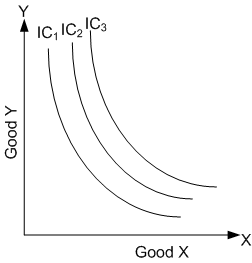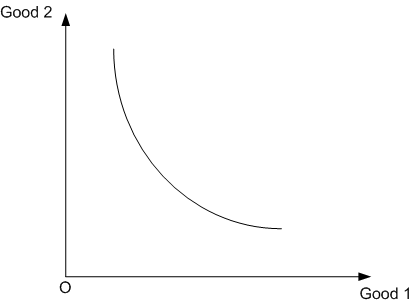CBSE
Class 10 Class 12
The consumer has well-defined preferences over the collection of all possible bundles. H/She can rank the available bundles according to his/her preferences over them.
It refers to the consumer's willingness to part with less and less quantity of one good in order to get one more additional unit of another good.
Indifference Curve: is a locus of all such points which show different combinations offering the same level of satisfaction.
Indifference Map: An indifference map represents a group of indifference curves each of which expresses a given level of satisfaction. If an indifference curve shifts to right, the level of satisfaction goes on increasing.
It refers to that situation when a consumer moves from one combination to another with a motive of deriving a higher level of satisfaction.
Marginal rate of substitution (Slope of indifference curve): It refers to the ratio of sacrifice in certain units of one good (say good y) to gain one more unit of another good (say good x). It is also referred to as the slope of indifference curve i.e. MRS = Loss in Good Y/Gain in Good X = ΔY/ΔX.
The indifference curve slopes downward. An increase in the amount of good 1 along the indifference curve is associated with a decrease in the amount of good 2.
Substitution Effect: Between substitute goods, use of one in place of other when the former becomes relatively cheaper is known as 'Substitution Effect'. For ex: Tea and Coffee are substitutes of each other. For ex: When the price of commodity say 'tea' falls, its demand will rise, in other words, the relative price of its substitute 'coffee' rises ultimately resulting in fall in demand of 'coffee'. ie. Consumers may substitute tea in place of coffee. This is called substitution effect.
A consumer's preferences can be represented by utility function. Utility is the power or capacity of a commodity to satisfy human want.
Two concepts of utility which are generally used are Total Utility and Marginal Utility: